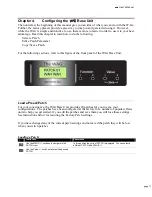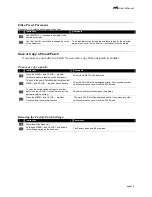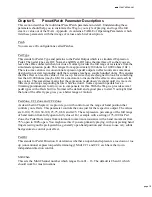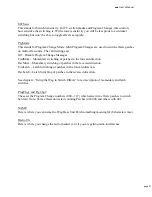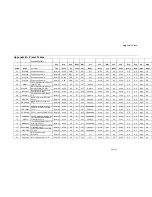
User's Manual
page 13
MIDI CC messages typically can modify effects parameters such as volume, reverb level, delay
amount, wah wah pedal position, etc. MIDI CC can also frequently be used to turn effects on and
off. MIDI Program Change messages are used to switch patches (AKA User Presets) on an
effect unit. TIP: We find that switching patches introduces more delay than using CC messages
to switch individual effects off and on. This depends on the effect unit design. If you are just
switching patches between sections of a song it likely doesn’t matter. If you are switching on a
note by note basis or for some toggling effect the delay may be noticeable.
The following table summarizes each port and its available interfaces.
Name
Interface
Description
MIDI OUT
5-pin DIN
Jack
Transports MIDI messages over industry standard 5-pin MIDI DIN port.
Pedal Out
1/4"
Stereo
jack
Simulates 10k TRS Expression Pedals. Can connect with a MONO TS cable if the effect
unit only uses TS of Expression Pedal. The wiper of the potentiometer is on the Tip lead of
the jack.
Don’t connect to effect units that put more than 3.5 volts on the TRS cable. See
our list of compatible effects units.
IMPORTANT: To
avoid potential damage to your gear, refer to the technical manuals
for the effects gear that you want to connect directly to the Base Unit.
See our list of
compatible effects units.
For those unfamiliar with TRS cables, refer to the following illustrations:
As described above, the Pedal Output jack fits a 1/4" phone plug that terminates either a Tip-
Ring-Sleeve (TRS) cable or mono (TS)cable. To use the
WAG
effectively, it's important to
understand the structure of the jacks, cables, and devices that you connected to them.
Sleeve
TIP
RING
TRS cable
Sleeve
TIP
Mono cable

















